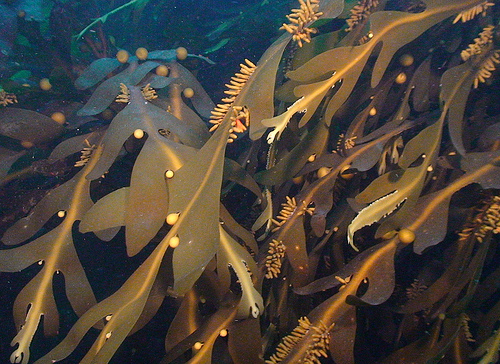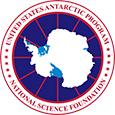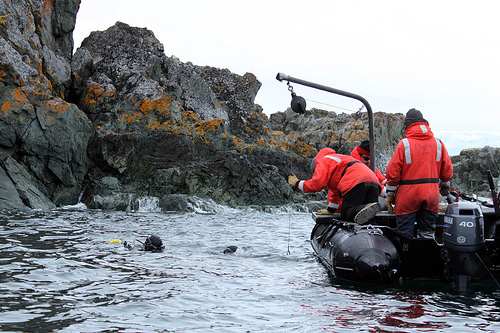Underwater forests of AntarcticaScientists dive deep into unlocking mysteries of unique marine ecosystemPosted May 21, 2010
There are mighty forests in Antarctica. Just don’t expect to see them poking through the ice and snow. The forests are underwater, composed of several species of huge brown algae, or seaweed, which blanket the ocean floor on the western side of the Antarctic Peninsula. These macroalgae dominate the local ecosystem in ways no other seaweed does anywhere else in the world. This unique marine forest — comparable to the great kelp forest off the coast of California in terms of sheer biomass — and the marine organisms that inhabit it has drawn a team of researchers from the University of Alabama at Birmingham (UAB) Education and Outreach
“We’ve learned that the community at Palmer is structured very differently than lots of other communities that look similar superficially,” said Charles Amsler A professor at the UAB and one of three principal investigators on the project, Amsler explained that the team’s previous work has shown that the major brown algae and some of the other marine organisms in the ecosystem use chemical defenses to thwart predators. Much of scientists’ earlier work involved studying the function and evolution of these chemical defenses. Some of the compounds they have isolated in the past show promise as cancer therapies or even pesticides. Now, Amsler, James McClintock 
Photo Credit: Chuck Amsler
Part of a Cystosphaera jacquinotii macroalga. The smaller, spherical structures are gas-filled bladders that allow the alga to float up off the bottom. The smaller cylindrical structures are reproductive structures called receptacles. “This project is really about understanding how this community works, and through understanding this unique community, understanding more about how a kelp forest works, other marine communities work, in contrast,” Amsler said. For example, the amphipods are essentially the marine equivalents of insects. Normally, they would feast on the brown algae — but that’s not the case because of the evolutionary chemical defenses of the polar seaweeds. “So imagine a forest or grassland at home with 100,000 plant-eating insects per meter squared, and yet the big macrophytes [aquatic plants] that dominate the system aren’t edible,” Amsler explained. Aside from their ongoing work since the 1999-2000 field season, there’s been little characterization of the marine community around Palmer, according to McClintock. “That makes it very exciting for us because it is a frontier in that sense,” he said. The study also establishes an important baseline to monitor future changes to the environment, noted McClintock, a marine invertebrate zoologist whose interests also range to ocean acidification and the impacts of invasive subpolar species in the Antarctic. The Antarctic Peninsula is undergoing rapid evolution from climate change, and it is one of the fastest-warming regions on the planet. The average winter temperature is about 6.5 degrees Celsius higher in the winter than it was in the 1950s — a rate of increase more than five times the global average. Delving into this unique and quickly changing ecosystem involves scuba diving in near-freezing waters. The seas around Palmer are also home to leopard seals, a predator dangerous enough to require an alarm system to alert divers in the water if someone topside in the dive boat spies one of the sharp-toothed critters.1 2 Next |
"News about the USAP, the Ice, and the People"



For USAP Participants |
For The Public |
For Researchers and EducatorsContact UsU.S. National Science FoundationOffice of Polar Programs Geosciences Directorate 2415 Eisenhower Avenue, Suite W7100 Alexandria, VA 22314 Sign up for the NSF Office of Polar Programs newsletter and events. Feedback Form |


